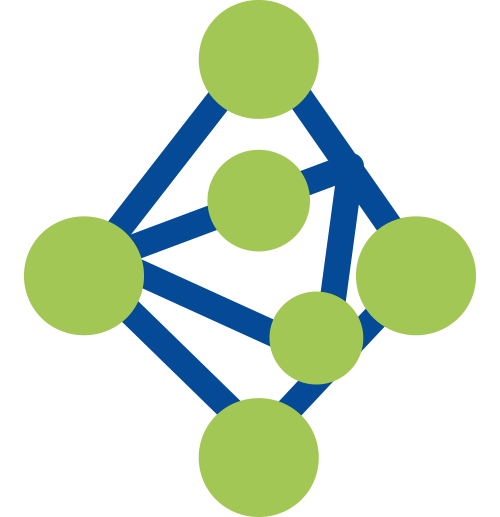Oligonucleotide pools represent a critical technological advancement in molecular diagnostics, particularly for liquid biopsy applications where detection sensitivity and comprehensive genomic coverage are paramount. Dynegene's high-throughput synthesis platform enables the parallel production of thousands to millions of distinct oligonucleotide sequences on a single microarray chip, providing unprecedented resources for developing highly multiplexed detection assays.
The technical specifications of Dynegene's oligo pool synthesis platform include:
|
Parameter
|
Specification
|
Application Benefit
|
|
Maximum Sequences/Chip
|
>4.35 million unique sequences
|
Comprehensive genomic coverage for pan-cancer detection
|
|
Sequence Length Capacity
|
Up to 300 nucleotides
|
Flexible probe design for complex genomic regions
|
|
Error Rate
|
1/1500
|
Balanced probe representation for consistent sensitivity
|
|
Turnaround Time
|
2-4 weeks (standard)
|
Efficient assay development workflow
|
These specifications enable the development of sophisticated liquid biopsy assays capable of detecting the minute quantities of circulating tumor DNA (ctDNA) present in patient blood samples, often representing less than 0.1% of total circulating cell-free DNA.
Hybridization Capture Application in Liquid Biopsy
The integration of oligo pools with hybrid capture technology provides a powerful approach for enriching low-abundance ctDNA fragments from plasma samples.
The workflow for implementing oligo pool-based liquid biopsy assays follows a systematic approach:
1. Library Preparation: Cell-free DNA is extracted from plasma and processed using Dynegene's DNA Library Preparation Kit for FFPE, cfDNA, gDNA, which has been optimized to handle the low input quantities and fragmented nature of circulating DNA.
2. Probe Design and Synthesis: Custom oligo pools are designed to target clinically relevant genomic regions. Dynegene's platform supports comprehensive design strategies including:
o Redundant tiling of probes across target regions
o Inclusion of unique molecular identifiers (UMIs)
o Optimization of GC content and melting temperature for consistent hybridization kinetics
3. Hybridization Capture: The QuarHyb Super Reagent Kit provides optimized conditions for efficient probe-target hybridization, with proprietary formulations that minimize non-specific binding and maximize capture efficiency of rare variants.
4. Target Enrichment: Following hybridization, streptavidin-coated magnetic beads facilitate physical separation of captured targets from the background DNA population.
5. Library Amplification and Sequencing: Captured libraries undergo final preparation steps before next-generation sequencing analysis.
Pan-Cancer Detection Applications
The QuarStar Liquid Pan-Cancer Panel 3.0 exemplifies the implementation of oligo pool technology in comprehensive liquid biopsy applications. This panel employs sophisticated oligo pool design to target multiple classes of genomic alterations including single-nucleotide variants, insertions/deletions, copy number variants, and chromosomal rearrangements across clinically actionable genes.
Technical specifications of the panel include:
- Genomic Coverage: Targets hundreds of clinically relevant regions across 80+ tumor-associated genes
- Detection Limit: Superior capture efficiency and uniformity
- Sample Input Requirement: Compatible with different input amount
The panel design incorporates oligo-FISH technology principles, allowing for specific hybridization even in challenging genomic contexts such as GC-rich or repetitive regions.
Technical Advantages of Oligo Pool-Based Approaches
Compared to traditional PCR-based liquid biopsy methods, oligo pool-based hybridization capture offers several technical advantages:
1. Comprehensive Genomic Coverage: The ability to simultaneously interrogate thousands of genomic loci enables broad molecular profiling from a single blood draw.
2. Reduced Amplification Bias: The hybridization-based approach minimizes the preferential amplification of certain sequences that can occur in multiplex PCR.
3. Enhanced Detection of Structural Variants: The longer probe length capacity (up to 300 bases) facilitates the capture of complex structural variants that may be missed by amplicon-based approaches.
4. Improved Variant Discrimination: Toehold-mediated strand displacement strategies can be incorporated into oligo pool design to enhance discrimination between closely related sequences.
5. Flexible Customization: The oligo pool synthesis platform allows rapid iteration and optimization of probe designs based on performance data and emerging clinical targets.
Implementation Challenges and Technical Considerations
Despite the advantages of oligo pool-based liquid biopsy approaches, several technical challenges require careful attention during implementation:
1. Pre-analytical Variables: The quality of cfDNA extraction significantly impacts downstream assay performance. Standardized collection tubes and processing protocols must be established to minimize leukocyte lysis and resultant genomic DNA contamination.
2. Bioinformatic Analysis Complexity: The multiplexed nature of oligo pool-based assays generates complex datasets requiring sophisticated error-suppression algorithms and variant calling pipelines.
3. Coverage Uniformity: While significantly improved over earlier technologies, maintaining consistent coverage across all targeted regions remains challenging, particularly for regions with extreme GC content.
4. Clinical Validation Requirements: Establishing clinical validity for comprehensive panels requires extensive testing across diverse patient populations and cancer types.
Future Directions
The continuous evolution of oligo pool synthesis technology promises further improvements in liquid biopsy applications:
1. Integration with AI-driven Design: Machine learning algorithms are being developed to optimize probe design parameters based on performance data from previous iterations.
2. Expanded Genomic Coverage: Next-generation panels will incorporate additional genomic regions identified as clinically relevant through ongoing cancer genomics research.
3. Enhanced Methylation Profiling: Specialized oligo pool designs are being developed to simultaneously capture both sequence mutations and epigenetic modifications, providing more comprehensive tumor profiling.
4. Automation Integration: The iQuars50 NGS Prep System automates critical workflow steps, improving reproducibility and reducing hands-on time for clinical implementation.
Conclusion
Oligo pool technology has fundamentally transformed probe development for liquid biopsy assays, enabling unprecedented sensitivity and genomic coverage for non-invasive cancer detection and monitoring. Dynegene's advanced synthesis platform and specialized reagent systems provide molecular diagnostic laboratories with the technical capabilities to implement sophisticated liquid biopsy testing workflows with enhanced clinical utility.
As synthetic biology approaches continue to advance, the integration of oligo pool technology with emerging molecular techniques promises further improvements in early cancer detection, treatment selection, and monitoring of minimal residual disease-reinforcing the central role of high-quality oligonucleotide synthesis in precision oncology.
 NGSHybridization Capture DNA Probe QuarStar Human All Exon Probes 4.0 (Tumor) QuarStar Human All Exon Probes 4.0 (Standard) QuarStar Liquid Pan-Cancer Panel 3.0 QuarStar Pan-Cancer Lite Panel 3.0 QuarStar Pan-Cancer Fusion Panel 1.0 QuarStar Pan Cancer Panel 1.0 Hybridization Capture RNA Probe QuarXeq Human All Exon Probes 3.0 HRD panel Library Preparation DNA Library Preparation Kit Fragmentation Reagent mRNA Capture Kit rRNA Depletion Kit QuarPro Superfast T4 DNA Ligase Hybridization Capture QuarHyb Super DNA Reagent Kit QuarHyb DNA Plus 2 Reagent Kit QuarHyb DNA Reagent Kit Plus QuarHyb One Reagent Kit QuarHyb Super Reagent Kit Pro Dynegene Adapter Family Dynegene Blocker Family Multiplex PCR QuarMultiple BRCA Amplicon QuarMultiple PCR Capture Kit 2.0 PathoSeq 450 Pathogen Library Corollary Reagent Streptavidin magnetic beads Equipment and Software The iQuars50 NGS Prep System
NGSHybridization Capture DNA Probe QuarStar Human All Exon Probes 4.0 (Tumor) QuarStar Human All Exon Probes 4.0 (Standard) QuarStar Liquid Pan-Cancer Panel 3.0 QuarStar Pan-Cancer Lite Panel 3.0 QuarStar Pan-Cancer Fusion Panel 1.0 QuarStar Pan Cancer Panel 1.0 Hybridization Capture RNA Probe QuarXeq Human All Exon Probes 3.0 HRD panel Library Preparation DNA Library Preparation Kit Fragmentation Reagent mRNA Capture Kit rRNA Depletion Kit QuarPro Superfast T4 DNA Ligase Hybridization Capture QuarHyb Super DNA Reagent Kit QuarHyb DNA Plus 2 Reagent Kit QuarHyb DNA Reagent Kit Plus QuarHyb One Reagent Kit QuarHyb Super Reagent Kit Pro Dynegene Adapter Family Dynegene Blocker Family Multiplex PCR QuarMultiple BRCA Amplicon QuarMultiple PCR Capture Kit 2.0 PathoSeq 450 Pathogen Library Corollary Reagent Streptavidin magnetic beads Equipment and Software The iQuars50 NGS Prep System Primers and Probes
Primers and Probes RNA SynthesissgRNA miRNA siRNA
RNA SynthesissgRNA miRNA siRNA



 Gene Synthesis
Gene Synthesis Oligo Pools
Oligo Pools CRISPR sgRNA Library
CRISPR sgRNA Library Antibody Library
Antibody Library Variant Library
Variant Library


 Tel: 400-017-9077
Tel: 400-017-9077 Address: Floor 2, Building 5, No. 248 Guanghua Road, Minhang District, Shanghai
Address: Floor 2, Building 5, No. 248 Guanghua Road, Minhang District, Shanghai Email:
Email: Tel: 400-017-9077
Tel: 400-017-9077 Address: Floor 2, Building 5, No. 248 Guanghua Road, Minhang District, Shanghai
Address: Floor 2, Building 5, No. 248 Guanghua Road, Minhang District, Shanghai Email:
Email: 







